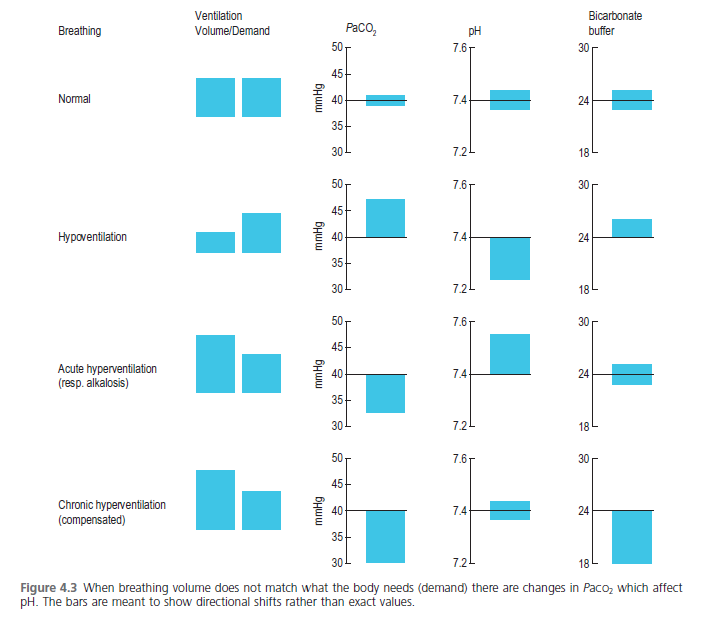Alright. I seem to have turned a few heads of late, so I guess it is time to take the dive:
"What& #39;s breathing got to do with it?"
A thread https://abs.twimg.com/emoji/v2/... draggable="false" alt="🧵" title="Thread" aria-label="Emoji: Thread">
https://abs.twimg.com/emoji/v2/... draggable="false" alt="🧵" title="Thread" aria-label="Emoji: Thread">
"What& #39;s breathing got to do with it?"
A thread
There are three main functions of breathing:
 https://abs.twimg.com/emoji/v2/... draggable="false" alt="🫁" title="Lungs" aria-label="Emoji: Lungs"> delivery of oxygen to every cell
https://abs.twimg.com/emoji/v2/... draggable="false" alt="🫁" title="Lungs" aria-label="Emoji: Lungs"> delivery of oxygen to every cell
 https://abs.twimg.com/emoji/v2/... draggable="false" alt="🫁" title="Lungs" aria-label="Emoji: Lungs"> removal of carbon dioxide
https://abs.twimg.com/emoji/v2/... draggable="false" alt="🫁" title="Lungs" aria-label="Emoji: Lungs"> removal of carbon dioxide
 https://abs.twimg.com/emoji/v2/... draggable="false" alt="🫁" title="Lungs" aria-label="Emoji: Lungs"> maintain pH - homeostasis
https://abs.twimg.com/emoji/v2/... draggable="false" alt="🫁" title="Lungs" aria-label="Emoji: Lungs"> maintain pH - homeostasis
Breathing must match metabolic demand in order to maintain homeostasis.
Breathing must match metabolic demand in order to maintain homeostasis.
For example, if you breathe too big or too fast, you can blow off too much carbon dioxide, which will raise your pH. Or if you don& #39;t breathe enough, your carbon dioxide will rise and lower your pH. With either scenario, you will feel breathless.
In chronic hyperventilation (which I commonly see), homeostasis is disrupted. This can lead to reduced blood flow to the brain, heart, and muscles through vasoconstriction. https://www.nejm.org/doi/10.1056/NEJMra012457">https://www.nejm.org/doi/10.10...
Due to the Bohr effect, oxygen remains bound to red blood cells - a further reduction in tissue oxygenation. https://www.youtube.com/watch?v=BYGPkRFvzOc">https://www.youtube.com/watch...
With chronic hyperventilation, we see a reduction in lactic acid buffering: in order to stabilize pH (which becomes alkaline when we hyperventilate), the kidneys excrete bicarbonate.
Can this bicarbonate blow out affect our energy systems? https://abs.twimg.com/emoji/v2/... draggable="false" alt="🧐" title="Gesicht mit Monokel" aria-label="Emoji: Gesicht mit Monokel"> @sunsopeningband ??
https://abs.twimg.com/emoji/v2/... draggable="false" alt="🧐" title="Gesicht mit Monokel" aria-label="Emoji: Gesicht mit Monokel"> @sunsopeningband ??
Can this bicarbonate blow out affect our energy systems?
And the autonomic nervous system can be impacted. Breathing fast can trigger more "fight or flight," whereas breathing slow can facilitate the parasympathetic nervous system: https://www.ncbi.nlm.nih.gov/pmc/articles/PMC5709795/">https://www.ncbi.nlm.nih.gov/pmc/artic...
In a chronic hyperventilated state, "air hunger" is common, as the body has re-set to a lower level of carbon dioxide. Meaning that an urge to breathe occurs sooner.
But it& #39;s not always about carbon dioxide.
But it& #39;s not always about carbon dioxide.
Inefficient breathing patterns can increase the work of breathing - making you feel more tired, breathless and can contribute to chest pain due to dynamic hyperinflation (not breathing out all the way).
http://rc.rcjournal.com/content/62/9/1212#:~:text=Dynamic%20hyperinflation%20occurs%20when%20a,subsequent%20restrictions%20on%20inspiratory%20capacity.">https://rc.rcjournal.com/content/6...
http://rc.rcjournal.com/content/62/9/1212#:~:text=Dynamic%20hyperinflation%20occurs%20when%20a,subsequent%20restrictions%20on%20inspiratory%20capacity.">https://rc.rcjournal.com/content/6...
So breathing is pretty important. And when there is a mismatch between breathing and metabolic demand, we can get a wide variety of symptoms. https://www.physio-pedia.com/Breathing_Pattern_Disorders">https://www.physio-pedia.com/Breathing...
Breathing well is essential to maintaining homeostasis. It is complex and has implications on all body systems so should be considered in chronic disease. As health care professionals, we should at least consider it.
However - it is not the panacea. Be wary of those advocating that breathing a certain way will "cure" anything.
Our goal is to assist people into a better state of recovery, using breathing to restore homeostasis, and hopefully, improve function.
Our goal is to assist people into a better state of recovery, using breathing to restore homeostasis, and hopefully, improve function.
More info:
http://www.bradcliff.com"> http://www.bradcliff.com
http://www.physiotherapyforbpd.com"> http://www.physiotherapyforbpd.com
https://longcovid.physio/breathing-pattern-disorders">https://longcovid.physio/breathing...
http://www.bradcliff.com"> http://www.bradcliff.com
http://www.physiotherapyforbpd.com"> http://www.physiotherapyforbpd.com
https://longcovid.physio/breathing-pattern-disorders">https://longcovid.physio/breathing...

 Read on Twitter
Read on Twitter


